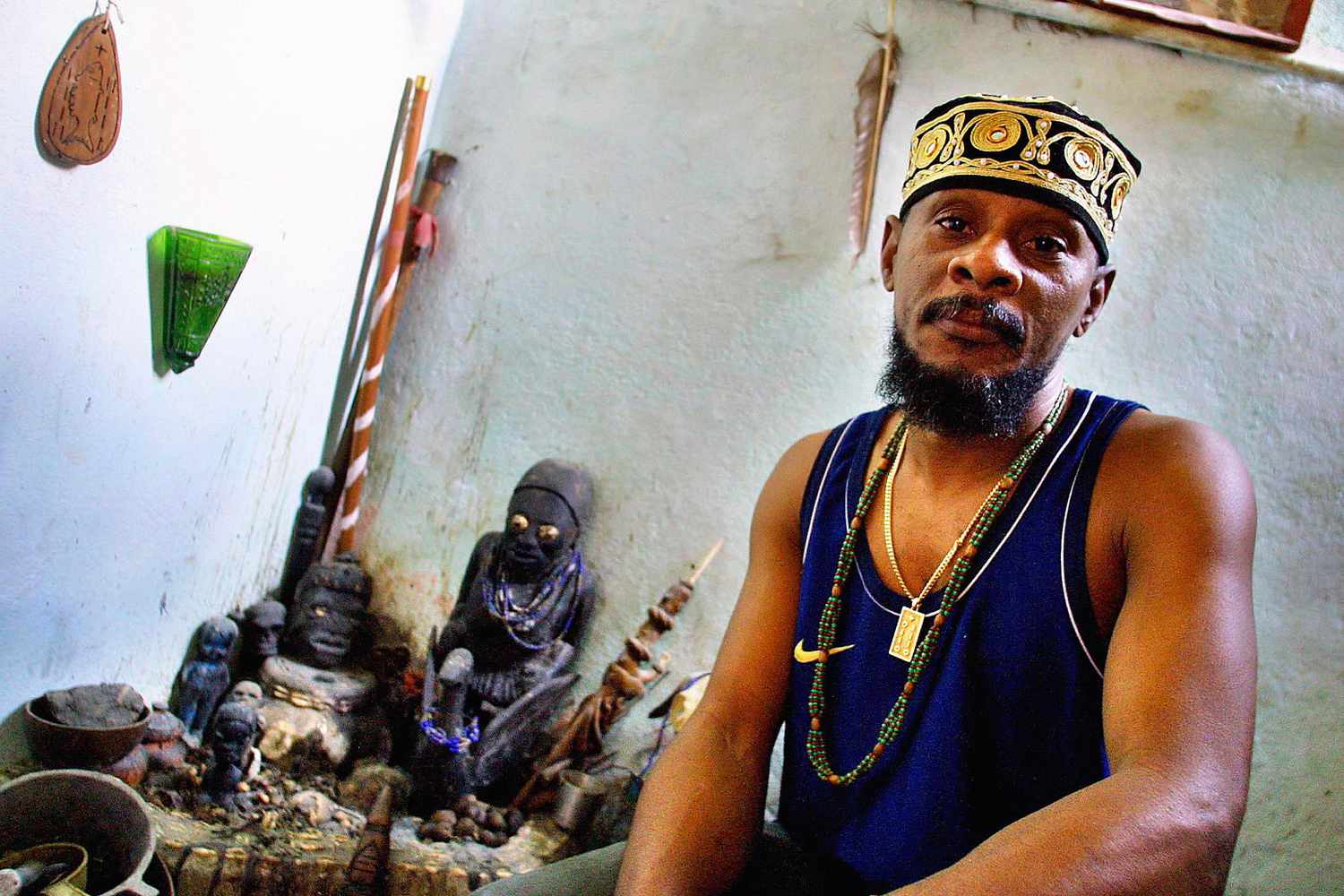
Santeria, a religion with roots in West Africa, blends Yoruba traditions with elements of Catholicism. Originating among enslaved Africans in Cuba, it has spread across the Americas. Santeria rituals often involve drumming, dancing, and animal sacrifices to honor deities called Orishas. These deities represent natural forces and human endeavors. Practitioners seek guidance and blessings through divination and offerings. Despite misconceptions, Santeria promotes harmony, respect, and community. It’s a vibrant, living tradition that continues to evolve. Curious about its practices, beliefs, and history? Here are 39 intriguing facts to deepen your understanding of this fascinating religion.
What is Santeria?
Santeria, also known as Regla de Ocha or La Regla Lucumí, is an Afro-Caribbean religion that originated in Cuba. It blends elements of Yoruba beliefs from West Africa with Roman Catholicism. This unique fusion has created a rich tapestry of rituals, deities, and practices.
- Santeria means "the way of the saints" in Spanish.
- It emerged during the 16th century when African slaves were brought to the Caribbean.
- The religion combines Yoruba deities, known as Orishas, with Catholic saints.
- Practitioners often refer to Santeria as "La Regla de Ocha" or "The Rule of the Orisha."
- Santeria rituals include drumming, dancing, and singing to honor the Orishas.
Orishas: The Deities of Santeria
Orishas are central to Santeria. These deities represent various aspects of nature and human life. Each Orisha has unique characteristics, preferences, and stories.
- There are over 400 Orishas in Santeria, but only a few are commonly worshipped.
- Orishas are believed to be intermediaries between humans and the supreme god, Olodumare.
- Each Orisha has specific colors, foods, and symbols associated with them.
- Popular Orishas include Elegua, Oshun, Shango, and Yemaya.
- Orishas can possess their followers during rituals, providing guidance and blessings.
Rituals and Ceremonies
Santeria rituals are vibrant and deeply symbolic. They often involve offerings, music, and dance to communicate with the Orishas.
- Offerings to Orishas can include fruits, vegetables, and animal sacrifices.
- Drumming is a key component of Santeria ceremonies, believed to summon the Orishas.
- Initiation ceremonies, known as "asientos," mark a person's formal entry into Santeria.
- Divination, using tools like cowrie shells, helps practitioners receive messages from the Orishas.
- Santeria priests and priestesses are called Babalawos and Iyalawos, respectively.
Influence of Catholicism
Santeria's syncretism with Catholicism is evident in its rituals and iconography. This blending helped the religion survive under colonial rule.
- Many Orishas are associated with Catholic saints; for example, Oshun is linked to Our Lady of Charity.
- Santeria altars often feature Catholic imagery alongside traditional Yoruba symbols.
- Practitioners may attend Catholic Mass while also participating in Santeria rituals.
- The use of holy water and candles in Santeria mirrors Catholic practices.
- Santeria celebrates both Yoruba and Catholic holidays.
Santeria in Modern Times
Santeria has spread beyond Cuba, gaining followers worldwide. Its adaptability has allowed it to thrive in diverse cultural contexts.
- Santeria is practiced in the United States, particularly in cities with large Cuban and Puerto Rican populations.
- The religion has influenced popular culture, appearing in music, literature, and film.
- Santeria's healing practices include herbal remedies and spiritual cleansings.
- Some practitioners keep their faith private due to misconceptions and stigma.
- Santeria has faced legal challenges, particularly regarding animal sacrifice.
Misconceptions and Controversies
Santeria is often misunderstood. Misconceptions can lead to fear and prejudice against its practitioners.
- Santeria is not a form of witchcraft or black magic.
- The religion promotes harmony with nature and respect for all living things.
- Animal sacrifices in Santeria are conducted humanely and with deep respect.
- Santeria does not involve the worship of the devil.
- The religion emphasizes community, family, and moral values.
Santeria's Cultural Impact
Santeria has left a lasting mark on the cultures where it is practiced. Its influence can be seen in various aspects of daily life.
- Santeria music, particularly drumming, has influenced genres like salsa and jazz.
- The religion's vibrant rituals have inspired visual artists and performers.
- Santeria's emphasis on oral tradition preserves the history and stories of the Yoruba people.
- The religion's herbal knowledge contributes to traditional medicine practices.
- Santeria festivals and celebrations enrich the cultural landscape of many communities.
The Future of Santeria
Santeria continues to evolve, adapting to modern challenges while preserving its core beliefs and practices.
- The internet has allowed Santeria practitioners to connect and share knowledge globally.
- Younger generations are increasingly interested in their cultural and spiritual heritage.
- Santeria's adaptability ensures its survival in changing social and political climates.
- The religion's emphasis on community and tradition provides a sense of belonging for its followers.
Final Thoughts on Santeria
Santeria, with its rich blend of African, Caribbean, and Catholic traditions, offers a unique perspective on spirituality. Its rituals, deities, and practices provide a deep connection to nature and the divine. Understanding Santeria helps dispel myths and fosters respect for diverse beliefs. Whether you're curious about its origins, intrigued by its ceremonies, or simply seeking knowledge, Santeria's vibrant culture has much to offer. Embracing this knowledge enriches our appreciation of the world's spiritual tapestry. So, next time you hear about Santeria, you'll know it's more than just a religion; it's a way of life that has touched countless lives. Keep exploring, stay curious, and remember, every fact learned brings us closer to understanding the beautiful diversity of human belief.
Was this page helpful?
Our commitment to delivering trustworthy and engaging content is at the heart of what we do. Each fact on our site is contributed by real users like you, bringing a wealth of diverse insights and information. To ensure the highest standards of accuracy and reliability, our dedicated editors meticulously review each submission. This process guarantees that the facts we share are not only fascinating but also credible. Trust in our commitment to quality and authenticity as you explore and learn with us.


